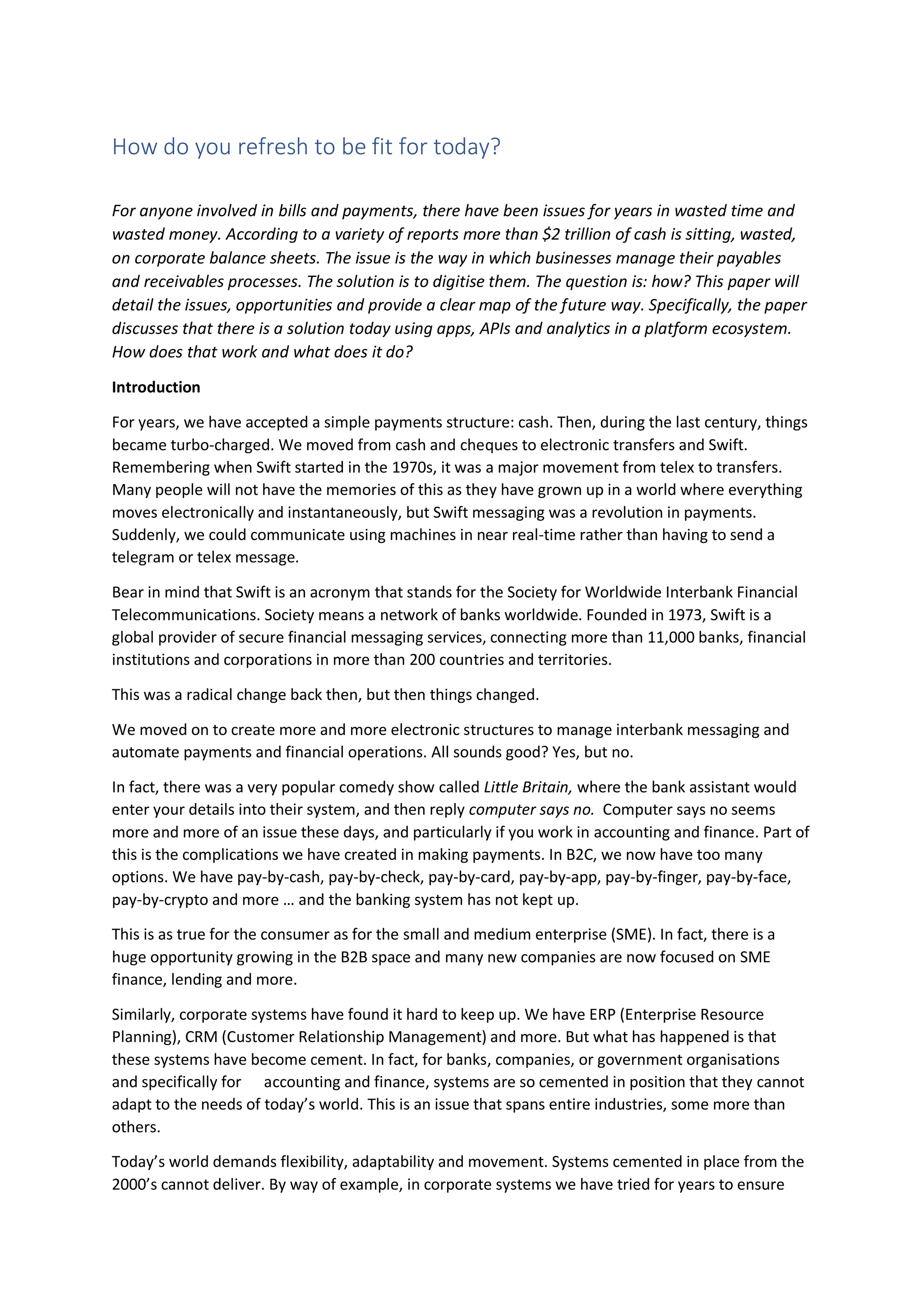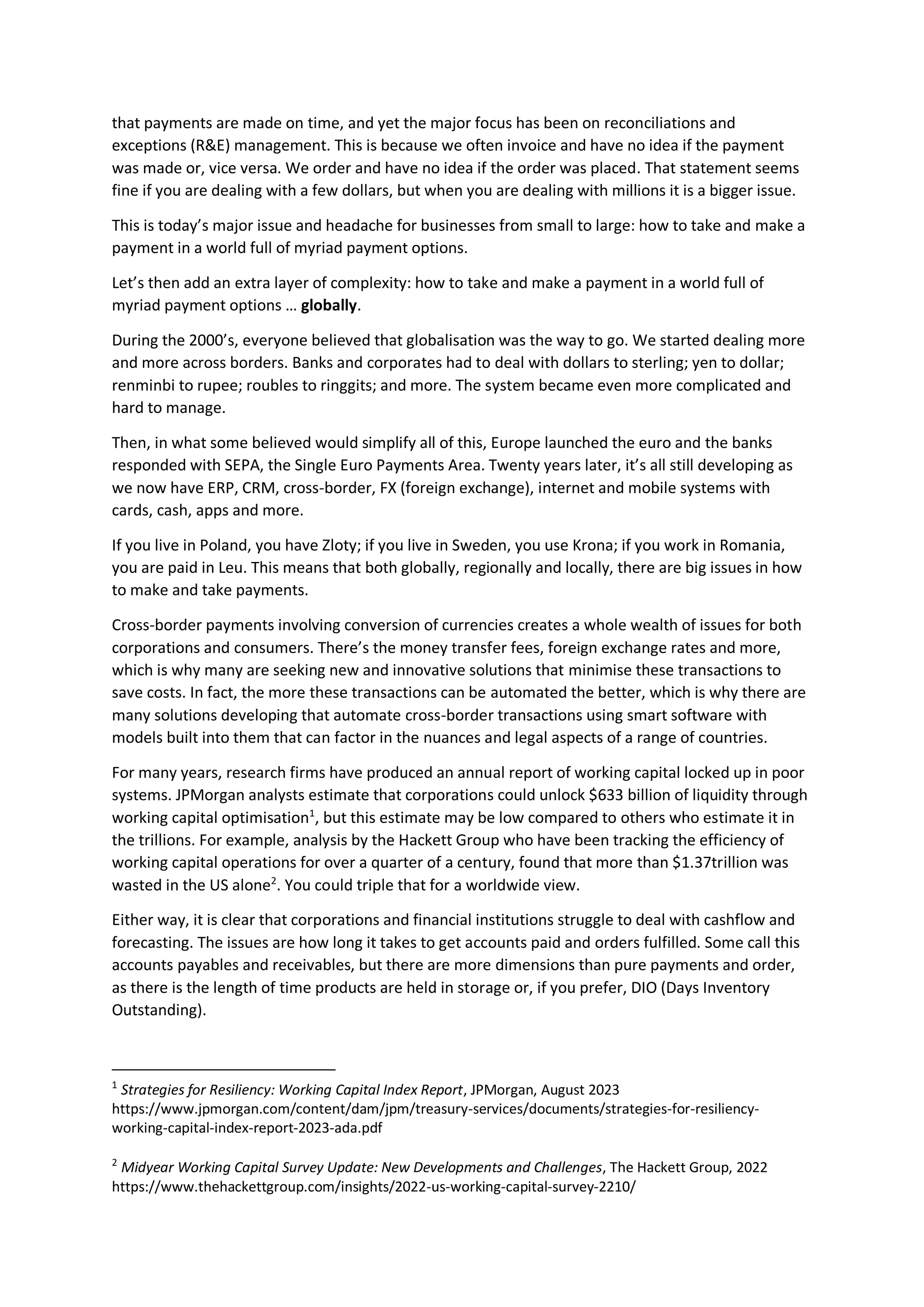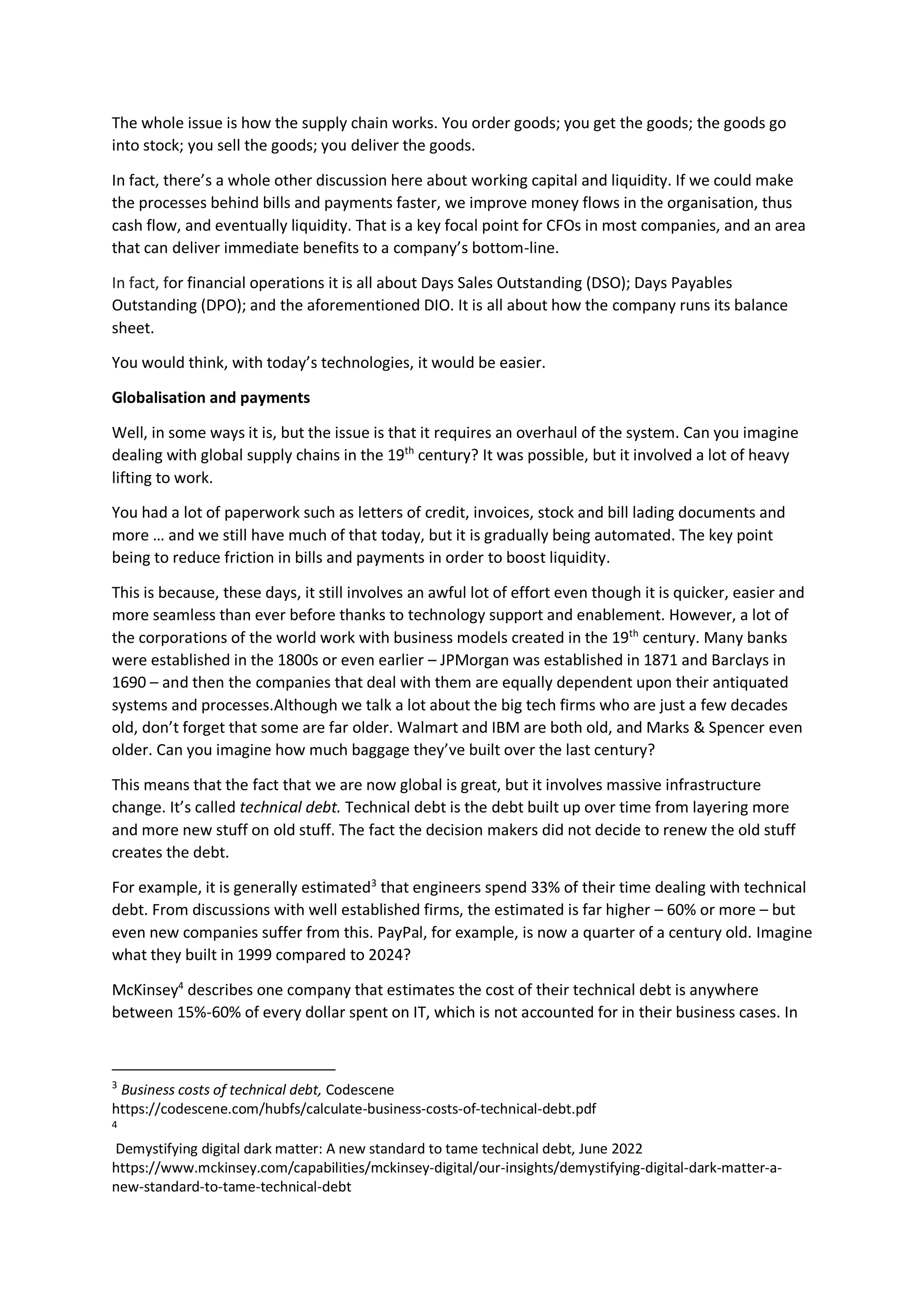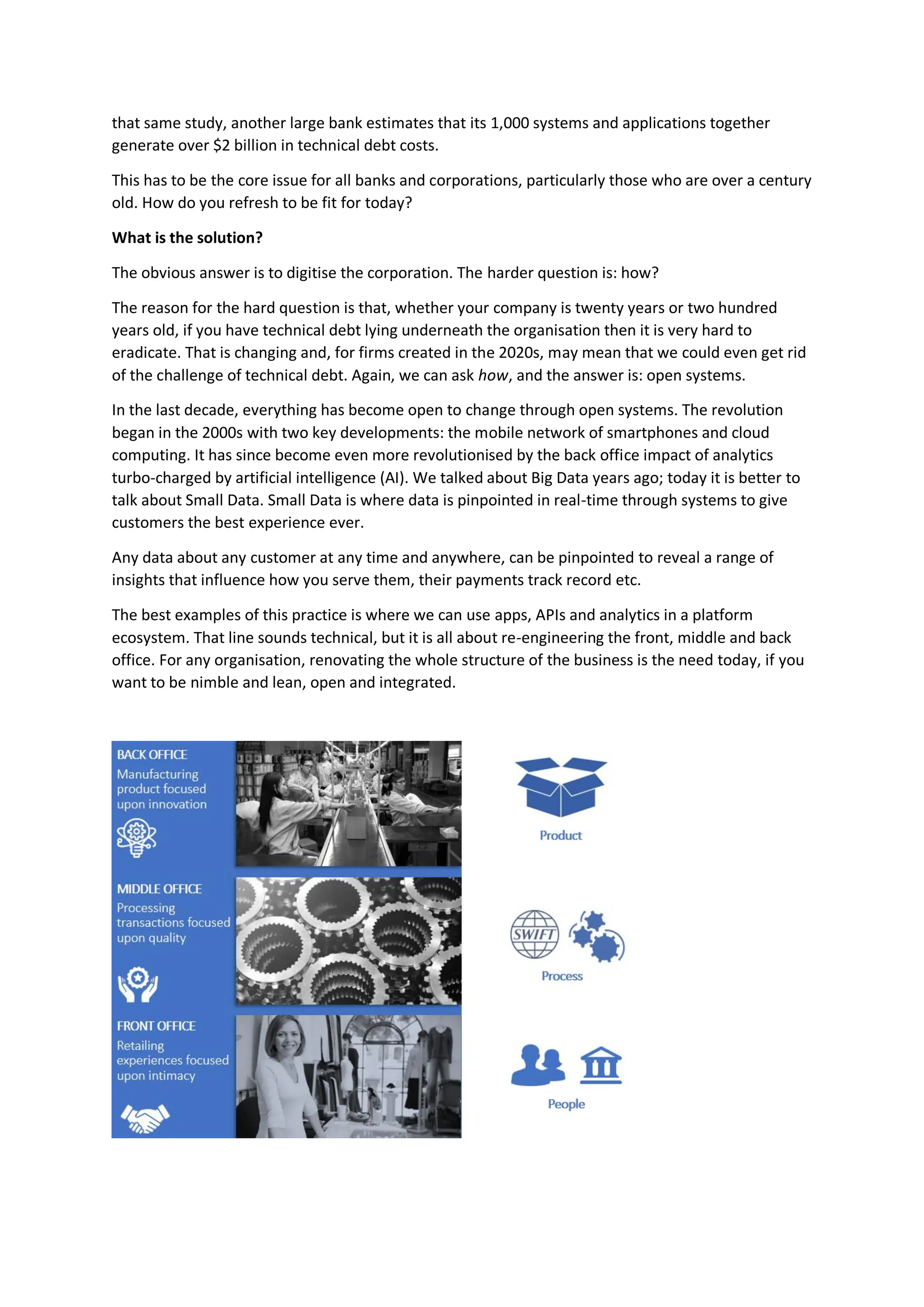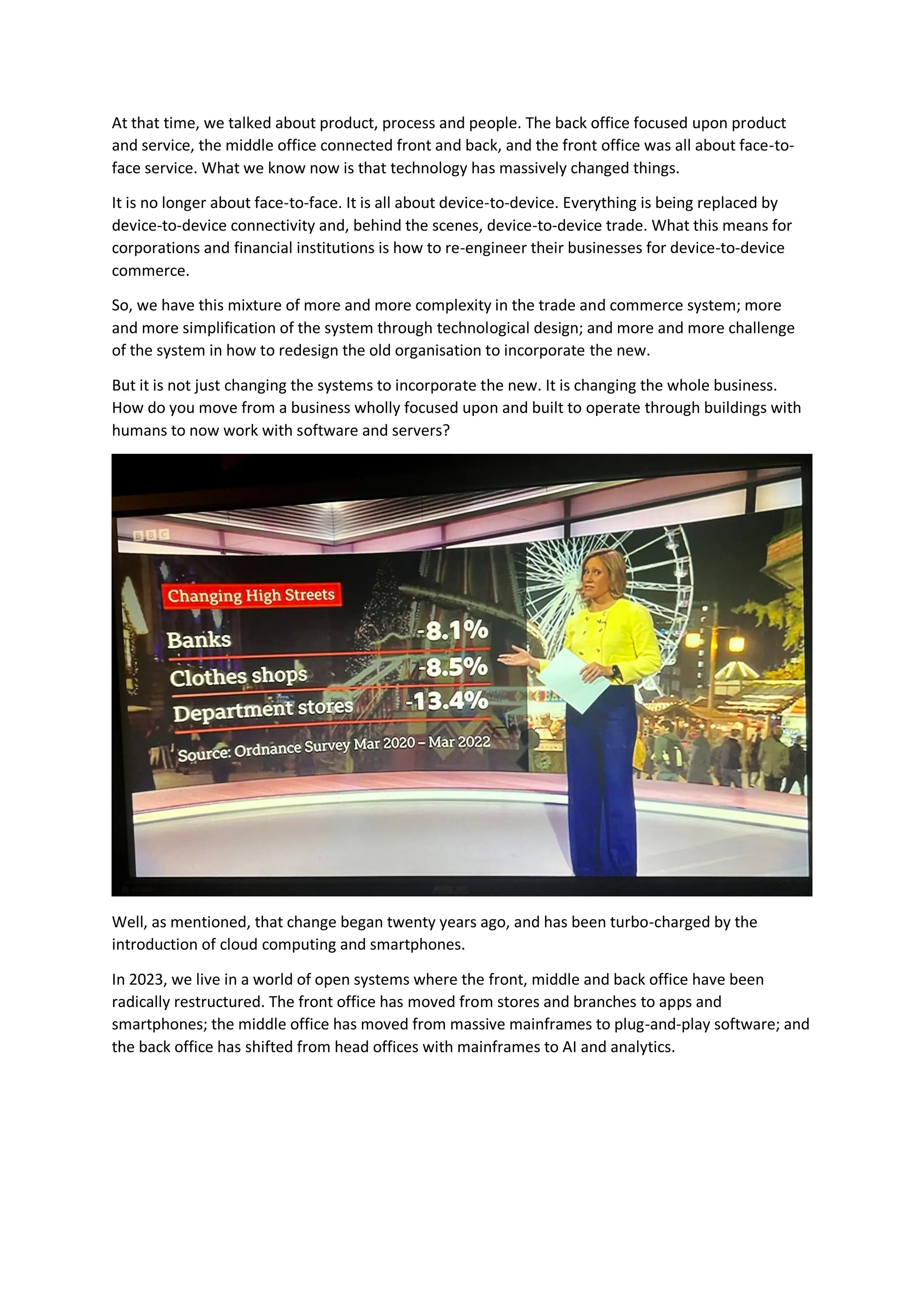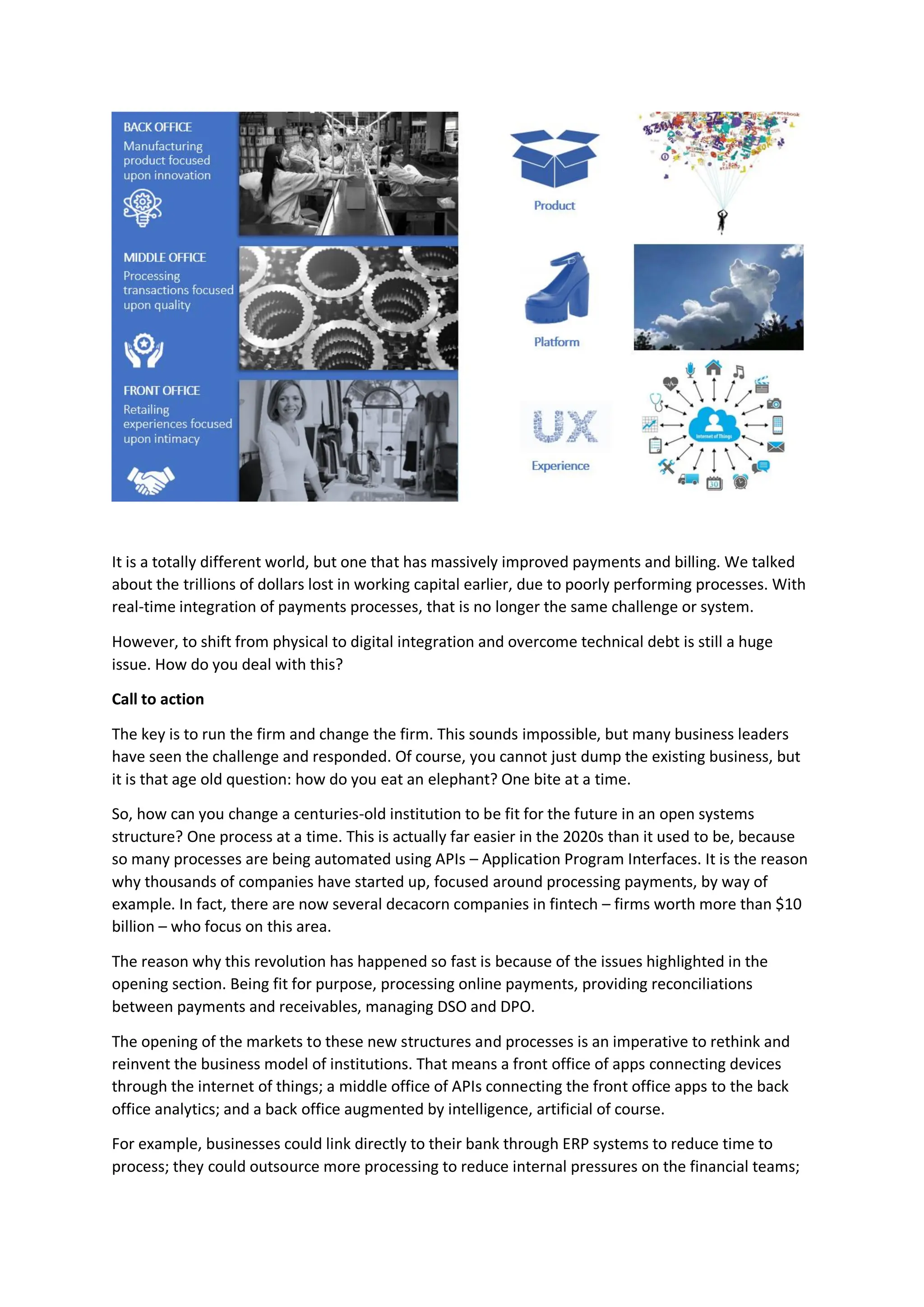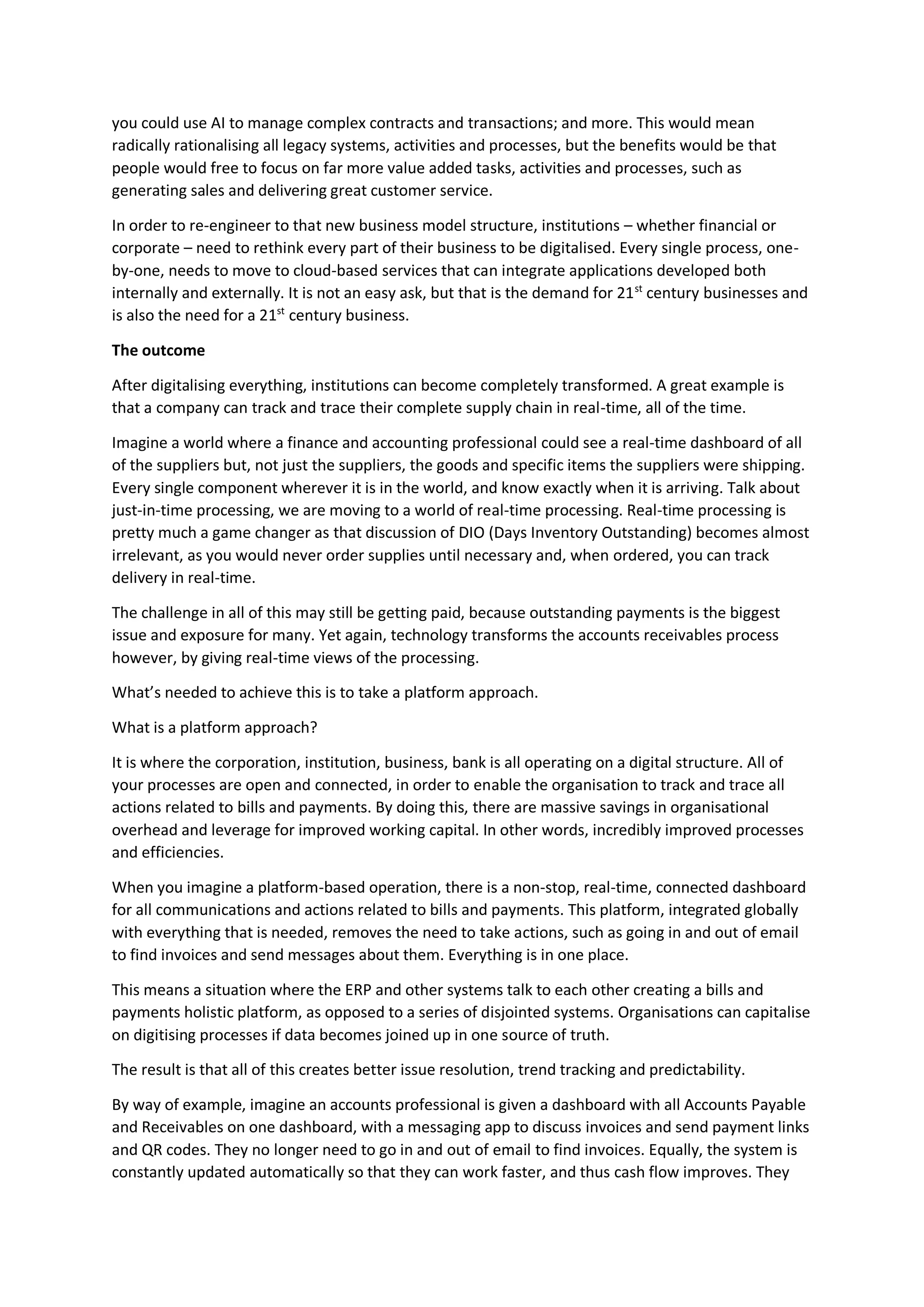The document outlines the significant inefficiencies and challenges faced by businesses in managing payments and receivables, emphasizing the necessity for digitization and automation. It discusses the evolution of payment systems and the growing complexity due to globalization, while highlighting the existing technical debt within organizations. The author advocates for a transformation towards open systems powered by apps, APIs, and analytics to enhance efficiency and improve cash flow in today’s fast-paced financial landscape.
